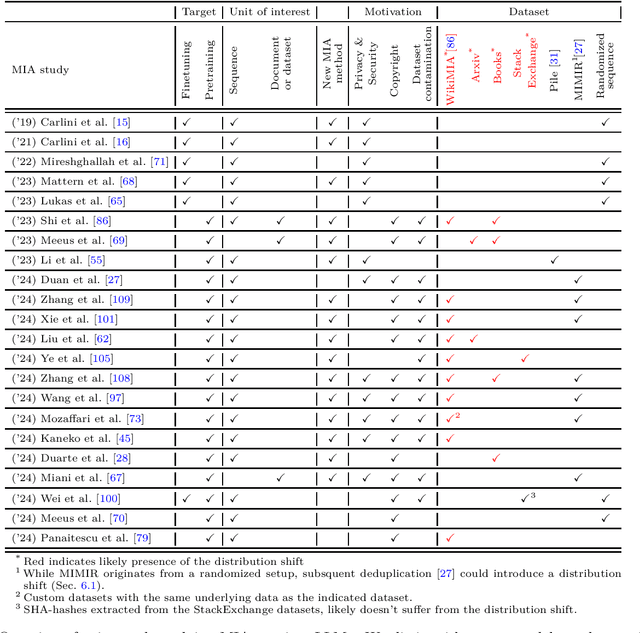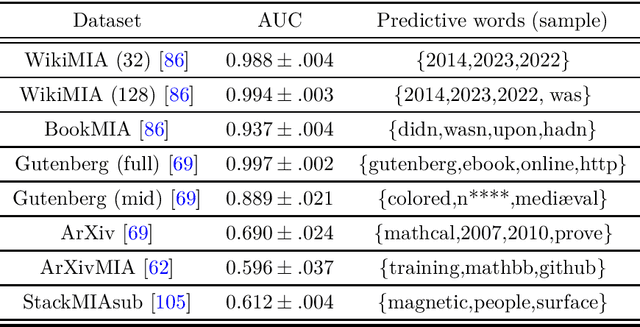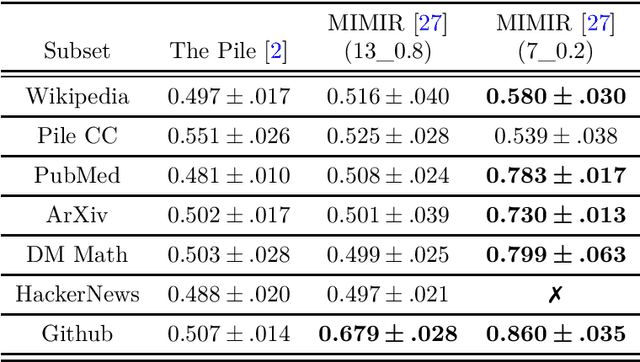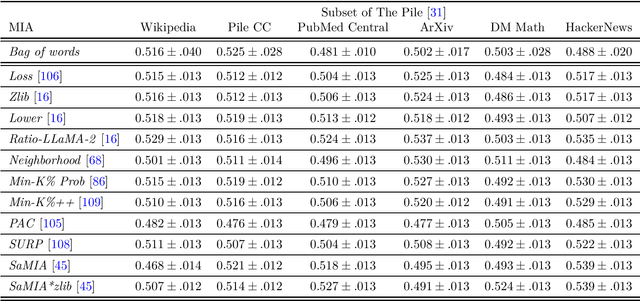Marek Rei
Fine-tuning with RAG for Improving LLM Learning of New Skills
Oct 01, 2025Abstract:Large language model (LLM) agents deployed for multi-step tasks frequently fail in predictable ways: attempting actions with unmet preconditions, issuing redundant commands, or mishandling environment constraints. While retrieval-augmented generation (RAG) can improve performance by providing runtime guidance, it requires maintaining external knowledge databases and adds computational overhead at every deployment. We propose a simple pipeline that converts inference-time retrieval into learned competence through distillation. Our approach: (1) extracts compact, reusable hints from agent failures, (2) uses these hints to generate improved teacher trajectories via one-shot retrieval at episode start, and (3) trains student models on these trajectories with hint strings removed, forcing internalization rather than memorization. Across two interactive benchmarks, ALFWorld (household tasks) and WebShop (online shopping), distilled students consistently outperform baseline agents, achieving up to 91% success on ALFWorld (vs. 79% for baselines) and improving WebShop scores to 72 (vs. 61 for baselines), while using 10-60% fewer tokens than retrieval-augmented teachers depending on the environment. The approach generalizes across model scales (7B/14B parameters) and agent architectures (ReAct/StateAct), demonstrating that retrieval benefits can be effectively internalized through targeted fine-tuning without permanent runtime dependencies.
AgentCoMa: A Compositional Benchmark Mixing Commonsense and Mathematical Reasoning in Real-World Scenarios
Aug 27, 2025Abstract:Large Language Models (LLMs) have achieved high accuracy on complex commonsense and mathematical problems that involve the composition of multiple reasoning steps. However, current compositional benchmarks testing these skills tend to focus on either commonsense or math reasoning, whereas LLM agents solving real-world tasks would require a combination of both. In this work, we introduce an Agentic Commonsense and Math benchmark (AgentCoMa), where each compositional task requires a commonsense reasoning step and a math reasoning step. We test it on 61 LLMs of different sizes, model families, and training strategies. We find that LLMs can usually solve both steps in isolation, yet their accuracy drops by ~30% on average when the two are combined. This is a substantially greater performance gap than the one we observe in prior compositional benchmarks that combine multiple steps of the same reasoning type. In contrast, non-expert human annotators can solve the compositional questions and the individual steps in AgentCoMa with similarly high accuracy. Furthermore, we conduct a series of interpretability studies to better understand the performance gap, examining neuron patterns, attention maps and membership inference. Our work underscores a substantial degree of model brittleness in the context of mixed-type compositional reasoning and offers a test bed for future improvement.
How to Improve the Robustness of Closed-Source Models on NLI
May 26, 2025Abstract:Closed-source Large Language Models (LLMs) have become increasingly popular, with impressive performance across a wide range of natural language tasks. These models can be fine-tuned to further improve performance, but this often results in the models learning from dataset-specific heuristics that reduce their robustness on out-of-distribution (OOD) data. Existing methods to improve robustness either perform poorly, or are non-applicable to closed-source models because they assume access to model internals, or the ability to change the model's training procedure. In this work, we investigate strategies to improve the robustness of closed-source LLMs through data-centric methods that do not require access to model internals. We find that the optimal strategy depends on the complexity of the OOD data. For highly complex OOD datasets, upsampling more challenging training examples can improve robustness by up to 1.5%. For less complex OOD datasets, replacing a portion of the training set with LLM-generated examples can improve robustness by 3.7%. More broadly, we find that large-scale closed-source autoregressive LLMs are substantially more robust than commonly used encoder models, and are a more appropriate choice of baseline going forward.
Reverse Engineering Human Preferences with Reinforcement Learning
May 21, 2025Abstract:The capabilities of Large Language Models (LLMs) are routinely evaluated by other LLMs trained to predict human preferences. This framework--known as LLM-as-a-judge--is highly scalable and relatively low cost. However, it is also vulnerable to malicious exploitation, as LLM responses can be tuned to overfit the preferences of the judge. Previous work shows that the answers generated by a candidate-LLM can be edited post hoc to maximise the score assigned to them by a judge-LLM. In this study, we adopt a different approach and use the signal provided by judge-LLMs as a reward to adversarially tune models that generate text preambles designed to boost downstream performance. We find that frozen LLMs pipelined with these models attain higher LLM-evaluation scores than existing frameworks. Crucially, unlike other frameworks which intervene directly on the model's response, our method is virtually undetectable. We also demonstrate that the effectiveness of the tuned preamble generator transfers when the candidate-LLM and the judge-LLM are replaced with models that are not used during training. These findings raise important questions about the design of more reliable LLM-as-a-judge evaluation settings. They also demonstrate that human preferences can be reverse engineered effectively, by pipelining LLMs to optimise upstream preambles via reinforcement learning--an approach that could find future applications in diverse tasks and domains beyond adversarial attacks.
Enhancing LLM Robustness to Perturbed Instructions: An Empirical Study
Apr 03, 2025Abstract:Large Language Models (LLMs) are highly vulnerable to input perturbations, as even a small prompt change may result in a substantially different output. Existing methods to enhance LLM robustness are primarily focused on perturbed data samples, whereas improving resiliency to perturbations of task-level instructions has remained relatively underexplored. In this work, we focus on character- and word-level edits of task-specific instructions, which substantially degrade downstream performance. We experiment with a variety of techniques to enhance the robustness of LLMs, including self-denoising and representation alignment, testing different models (Llama 3 and Flan-T5), datasets (CoLA, QNLI, SST-2) and instructions (both task-oriented and role-oriented). We find that, on average, self-denoising -- whether performed by a frozen LLM or a fine-tuned model -- achieves substantially higher performance gains than alternative strategies, including more complex baselines such as ensembling and supervised methods.
LLMs can implicitly learn from mistakes in-context
Feb 12, 2025Abstract:Learning from mistakes is a fundamental feature of human intelligence. Previous work has shown that Large Language Models (LLMs) can also learn from incorrect answers when provided with a comprehensive rationale detailing why an answer is wrong or how to correct it. In this work, we examine whether LLMs can learn from mistakes in mathematical reasoning tasks when these explanations are not provided. We investigate if LLMs are able to implicitly infer such rationales simply from observing both incorrect and correct answers. Surprisingly, we find that LLMs perform better, on average, when rationales are eliminated from the context and incorrect answers are simply shown alongside correct ones. This approach also substantially outperforms chain-of-thought prompting in our evaluations. We show that these results are consistent across LLMs of different sizes and varying reasoning abilities. Further, we carry out an in-depth analysis, and show that prompting with both wrong and correct answers leads to greater performance and better generalisation than introducing additional, more diverse question-answer pairs into the context. Finally, we show that new rationales generated by models that have only observed incorrect and correct answers are scored equally as highly by humans as those produced with the aid of exemplar rationales. Our results demonstrate that LLMs are indeed capable of in-context implicit learning.
KU AIGEN ICL EDI@BC8 Track 3: Advancing Phenotype Named Entity Recognition and Normalization for Dysmorphology Physical Examination Reports
Jan 16, 2025Abstract:The objective of BioCreative8 Track 3 is to extract phenotypic key medical findings embedded within EHR texts and subsequently normalize these findings to their Human Phenotype Ontology (HPO) terms. However, the presence of diverse surface forms in phenotypic findings makes it challenging to accurately normalize them to the correct HPO terms. To address this challenge, we explored various models for named entity recognition and implemented data augmentation techniques such as synonym marginalization to enhance the normalization step. Our pipeline resulted in an exact extraction and normalization F1 score 2.6\% higher than the mean score of all submissions received in response to the challenge. Furthermore, in terms of the normalization F1 score, our approach surpassed the average performance by 1.9\%. These findings contribute to the advancement of automated medical data extraction and normalization techniques, showcasing potential pathways for future research and application in the biomedical domain.
Meta-Reasoning Improves Tool Use in Large Language Models
Nov 07, 2024Abstract:External tools help large language models (LLMs) succeed at tasks where they would otherwise typically fail. In existing frameworks, LLMs learn tool use either by in-context demonstrations or via full model fine-tuning on annotated data. As these approaches do not easily scale, a recent trend is to abandon them in favor of lightweight, parameter-efficient tuning paradigms. These methods allow quickly alternating between the frozen LLM and its specialised fine-tuned version, by switching on or off a handful of additional custom parameters. Hence, we postulate that the generalization ability of the frozen model can be leveraged to improve tool selection. We present Tool selECTion via meta-reasONing (TECTON), a two-phase system that first reasons over a task using a custom fine-tuned LM head and outputs candidate tools. Then, with the custom head disabled, it meta-reasons (i.e., it reasons over the previous reasoning process) to make a final choice. We show that TECTON results in substantial gains - both in-distribution and out-of-distribution - on a range of math reasoning datasets.
DiffuseDef: Improved Robustness to Adversarial Attacks
Jun 28, 2024Abstract:Pretrained language models have significantly advanced performance across various natural language processing tasks. However, adversarial attacks continue to pose a critical challenge to system built using these models, as they can be exploited with carefully crafted adversarial texts. Inspired by the ability of diffusion models to predict and reduce noise in computer vision, we propose a novel and flexible adversarial defense method for language classification tasks, DiffuseDef, which incorporates a diffusion layer as a denoiser between the encoder and the classifier. During inference, the adversarial hidden state is first combined with sampled noise, then denoised iteratively and finally ensembled to produce a robust text representation. By integrating adversarial training, denoising, and ensembling techniques, we show that DiffuseDef improves over different existing adversarial defense methods and achieves state-of-the-art performance against common adversarial attacks.
Inherent Challenges of Post-Hoc Membership Inference for Large Language Models
Jun 25, 2024



Abstract:Large Language Models (LLMs) are often trained on vast amounts of undisclosed data, motivating the development of post-hoc Membership Inference Attacks (MIAs) to gain insight into their training data composition. However, in this paper, we identify inherent challenges in post-hoc MIA evaluation due to potential distribution shifts between collected member and non-member datasets. Using a simple bag-of-words classifier, we demonstrate that datasets used in recent post-hoc MIAs suffer from significant distribution shifts, in some cases achieving near-perfect distinction between members and non-members. This implies that previously reported high MIA performance may be largely attributable to these shifts rather than model memorization. We confirm that randomized, controlled setups eliminate such shifts and thus enable the development and fair evaluation of new MIAs. However, we note that such randomized setups are rarely available for the latest LLMs, making post-hoc data collection still required to infer membership for real-world LLMs. As a potential solution, we propose a Regression Discontinuity Design (RDD) approach for post-hoc data collection, which substantially mitigates distribution shifts. Evaluating various MIA methods on this RDD setup yields performance barely above random guessing, in stark contrast to previously reported results. Overall, our findings highlight the challenges in accurately measuring LLM memorization and the need for careful experimental design in (post-hoc) membership inference tasks.
 Add to Chrome
Add to Chrome Add to Firefox
Add to Firefox Add to Edge
Add to Edge